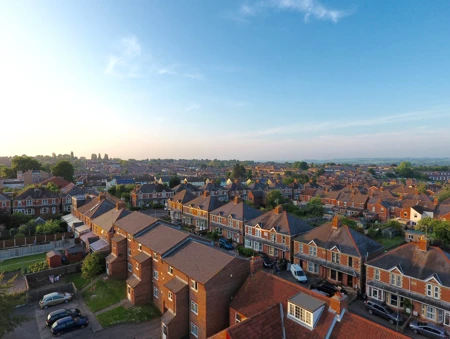If you’re already a landlord, or thinking about becoming one, there are a lot of regulations to think about – and one of them is energy efficiency. All landlords with existing tenancies need to have an Energy Performance Certificate (EPC) for their rental properties to ensure homes are energy-efficient, warm, and damp-free.
Currently, the Minimum Energy Efficiency Standard (MEES) says landlords need to have an EPC E rating, but the UK Government has said it wants to tighten the regulation so the minimum standard for rental and buy-to-let properties is C.
If you’re thinking about investing in a buy-to-let property, it’s important to bear this in mind. While it’s currently at the consultation stage, if brought in, it might mean you need to invest in more energy efficiency measures before you can welcome new tenants.
What’s an EPC?
Energy Performance Certificates (EPCs) have been around in England and Wales for 15 years, and they are used to rate a property’s energy efficiency. Graded from A to G, with A being the most efficient, they act as a simple way to show how effective various energy conservation and reduction measures are, including insulation, boilers, smart meters, lighting, and windows.
EPCs show the current rating of a property, as well as its potential rating if recommended improvements were made. Legally, as a landlord, you must have an up-to-date EPC.
You can start the process of applying to have an EPC assessment done here:
https://www.gov.uk/get-new-energy-certificate
What changes will there be for EPCs in buy-to-let properties?
Currently, most rental properties must be E rated. But, in a consultation document published in 2020, the Government suggested a new Band C requirement would come into law by 2025 for new tenancies, and 2028 for existing tenants.
This is also just the start: by 2030, they’re aiming to increase the requirement to Band B.
Why are the changes being made?
The changes to the EPC requirements are part of the Government’s Net Zero strategy, to increase the number of energy-efficient homes helping to reduce emissions.
The Government also says making these changes will decrease bills for tenants, increase the quality, value, and desirability of landlords’ assets, while also providing greater energy security through lower energy demand on the grid and reduced fuel imports.

How will the new EPC regulations affect landlords?
For most landlords, the C standard is achievable with some investment. Property website, Rightmove, analysed the energy efficiency ratings of over 15 million homes and found that of the 57% currently in the D to G rating, only 11% could not reach a C.
It means you might have to take measures such as improving insulation, installing smart meters, and upgrading boilers. None of which is cheap though.
There are some exemptions to meeting the new minimum EPC regulations. These include:
- The building is listed, and upgrades would alter its character or appearance to an unacceptable degree.
- The upgrades or changes required are not approved by your mortgage lender.
It’s very important to keep track of costs because there is a cap of £3,500 in place for upgrades. This means that you can still legally rent your property with an EPC below the required rating - if you can show you have to spend above that limit to achieve it.
You can access funding for various improvements, and they are listed here:
https://www.simpleenergyadvice.org.uk/pages/funding-opportunities-for-landlords
Is there going to be a new cost cap for EPCs?
It seems likely the Government is going to increase this cap to £10,000, although it has not been confirmed. It would mean more outlay for landlords, and with it being a flat rate, the level of investment as a proportion of the value of the property would vary tremendously.
Obviously, having to spend £10,000 upgrading the energy efficiency of a £100,000 buy-to-let flat is a much more significant investment than for one worth £1 million, relative to the income you can derive.
Can you get the changes funded?
You can’t usually fund these improvements as part of your mortgage when you buy-to-let, and so will need to pay for them yourself. But it might be possible to go back to your lender after the work has been completed, get a reappraisal of the property value and work done, and see if further lending is available.
Ultimately, it’s really important to get a quote for all work that needs doing, and budget by making financial projections for the cost of upgrades, the cost of lending, and your rental income to future-proof your investment.
If you’re interested in buy-to-let mortgages and would like to know more, we’re always happy to help. Feel free to get in touch with us here.
Important information
There is no guarantee that it will be possible to arrange continuous letting of the property, nor that rental income will be sufficient to meet the cost of the mortgage.
Your property may be repossessed if you do not keep up repayments on your mortgage.
There may be a fee for mortgage advice. The actual amount you pay will depend upon your circumstances. The fee is up to 1% but a typical fee is 0.3% of the amount borrowed.

